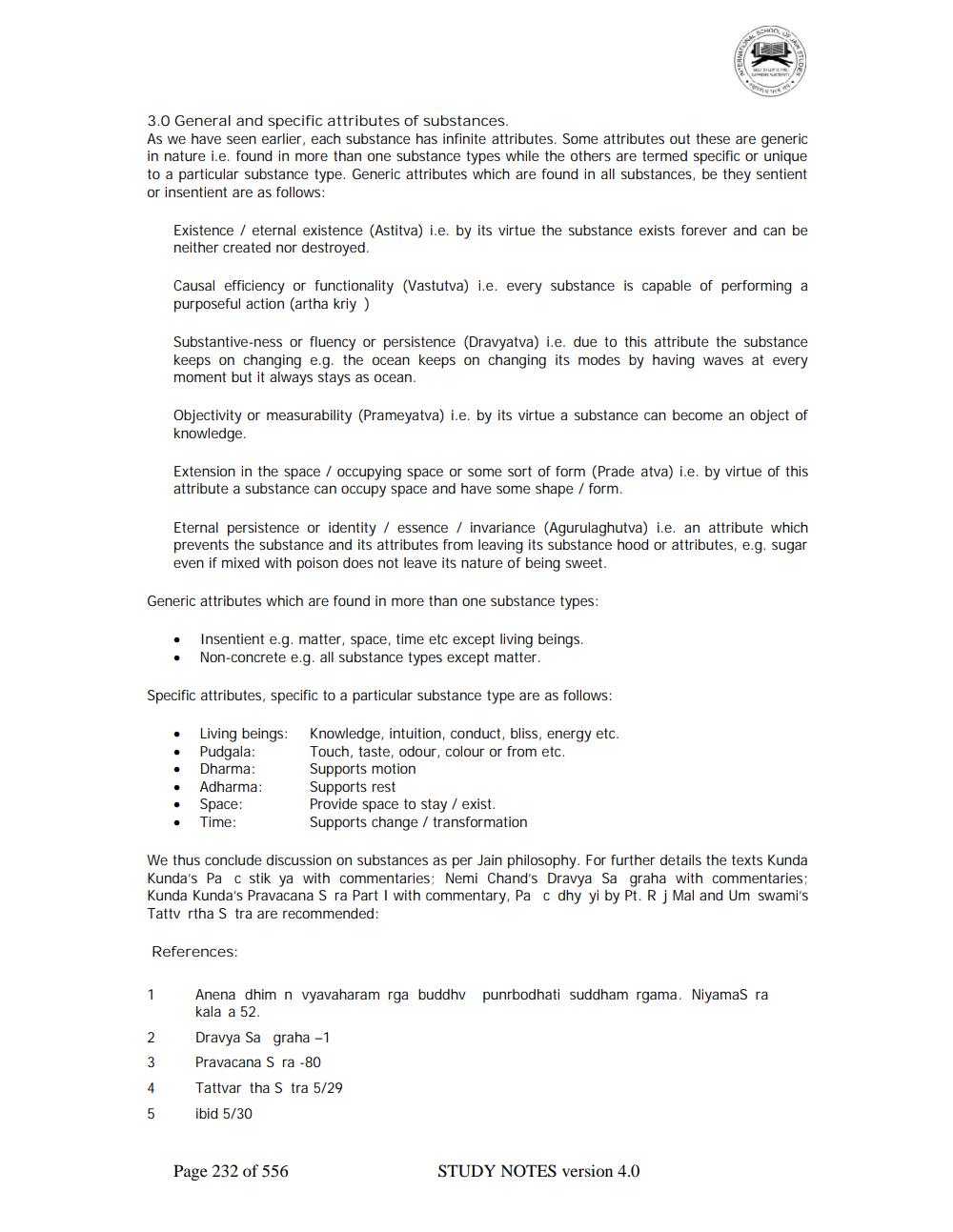________________
3.0 General and specific attributes of substances. As we have seen earlier, each substance has infinite attributes. Some attributes out these are generic in nature i.e. found in more than one substance types while the others are termed specific or unique to a particular substance type. Generic attributes which are found in all substances, be they sentient or insentient are as follows:
Existence / eternal existence (Astitva) i.e. by its virtue the substance exists forever and can be neither created nor destroyed
Causal efficiency or functionality (Vastutva) i.e. every substance is capable of performing a purposeful action (artha kriy )
Substantive-ness or fluency or persistence (Dravyatva) i.e. due to this attribute the substance keeps on changing e.g. the ocean keeps on changing its modes by having waves at every moment but it always stays as ocean.
Objectivity or measurability (Prameyatva) i.e. by its virtue a substance can become an object of knowledge.
Extension in the space / occupying space or some sort of form (Prade atva) i.e. by virtue of this attribute a substance can occupy space and have some shape / form.
Eternal persistence or identity / essence / invariance (Agurulaghutva) i.e. an attribute which prevents the substance and its attributes from leaving its substance hood or attributes, e.g. sugar even if mixed with poison does not leave its nature of being sweet.
Generic attributes which are found in more than one substance types:
Insentient e.g. matter, space, time etc except living beings. Non-concrete e.g. all substance types except matter.
•
Specific attributes, specific to a particular substance type are as follows:
•
Living beings: Pudgala: Dharma: Adharma: Space: Time:
Knowledge, intuition, conduct, bliss, energy etc. Touch, taste, odour, colour or from etc. Supports motion Supports rest Provide space to stay / exist. Supports change / transformation
We thus conclude discussion on substances as per Jain philosophy. For further details the texts Kunda Kunda's Pac stik ya with commentaries: Nemi Chand's Dravya Sa graha with commentaries; Kunda Kunda's Pravacana S ra Part I with commentary, Pa c dhy yi by Pt. Rj Mal and Um swami's Tattv rtha S tra are recommended:
References
Anena dhim n vyavaharam rga buddhv punrbodhati suddham rgama. NiyamaS ra kala a 52. Dravya Sa graha -1 Pravacana S ra - 80 Tattvar tha S tra 5/29 ibid 5/30
Page 232 of 556
STUDY NOTES version 4.0




